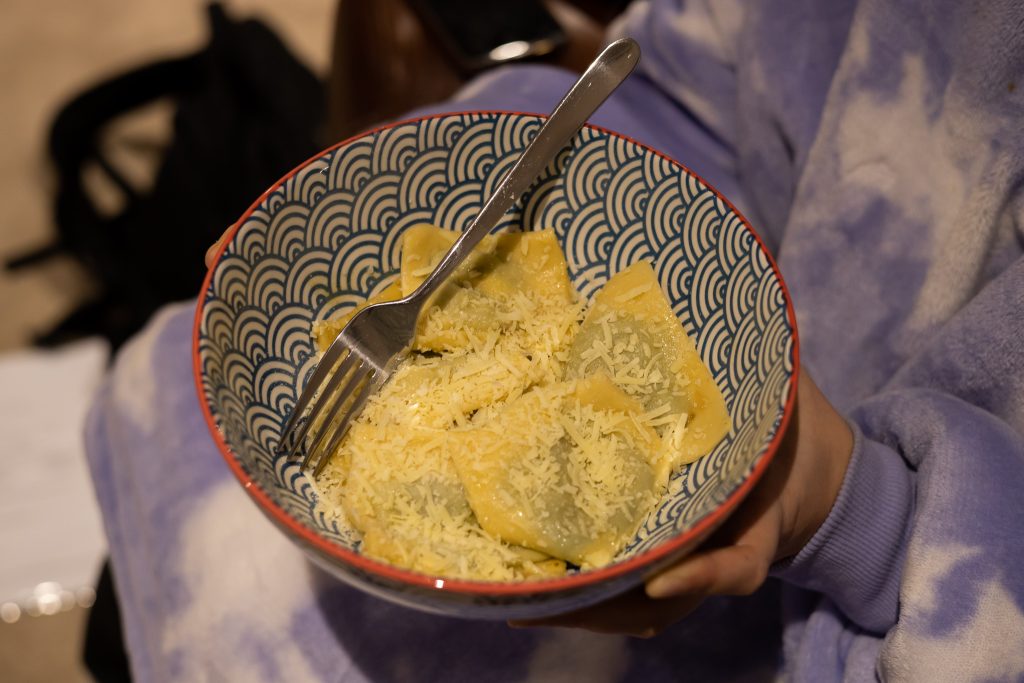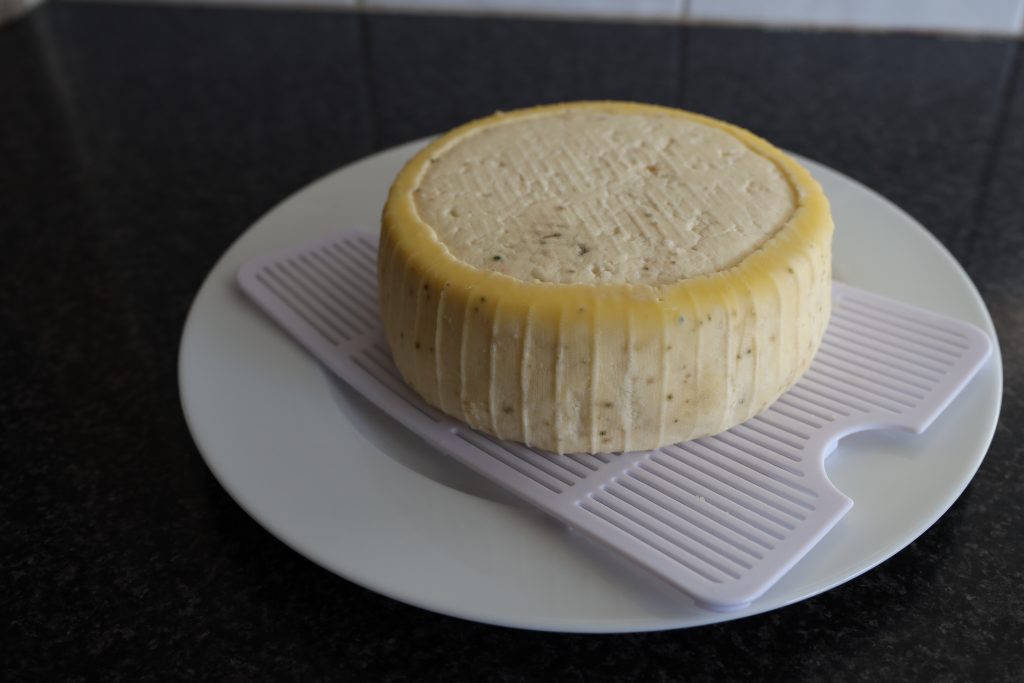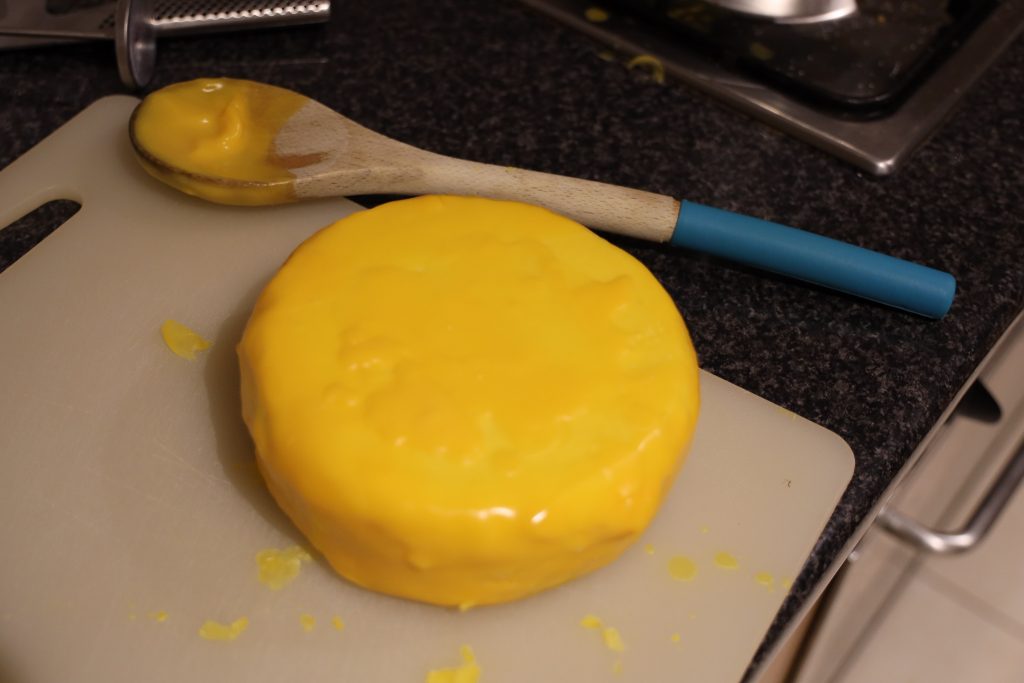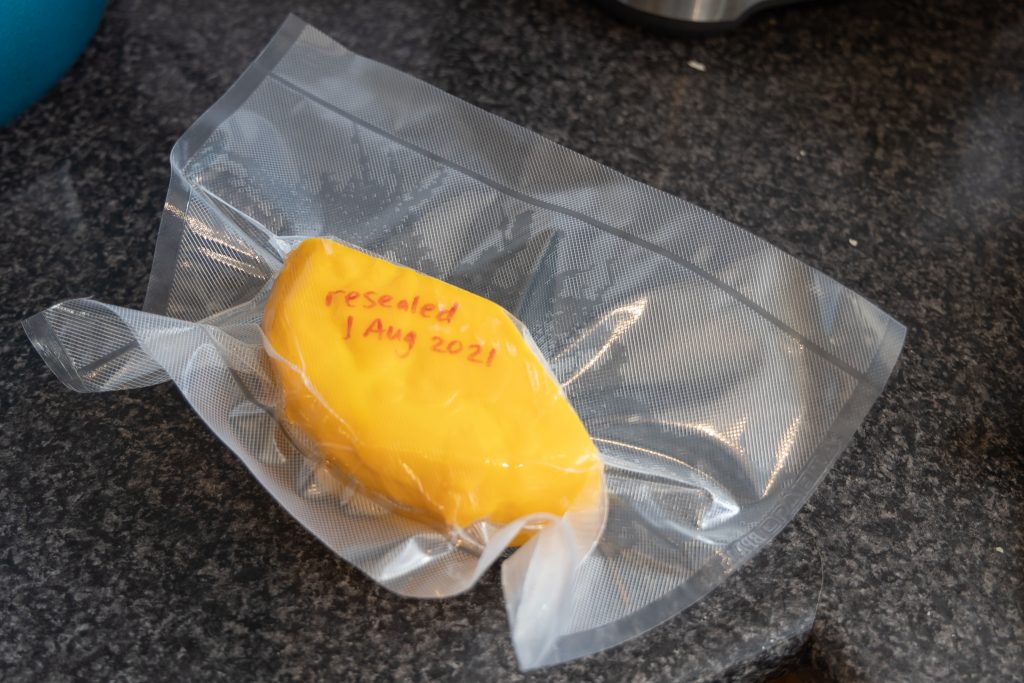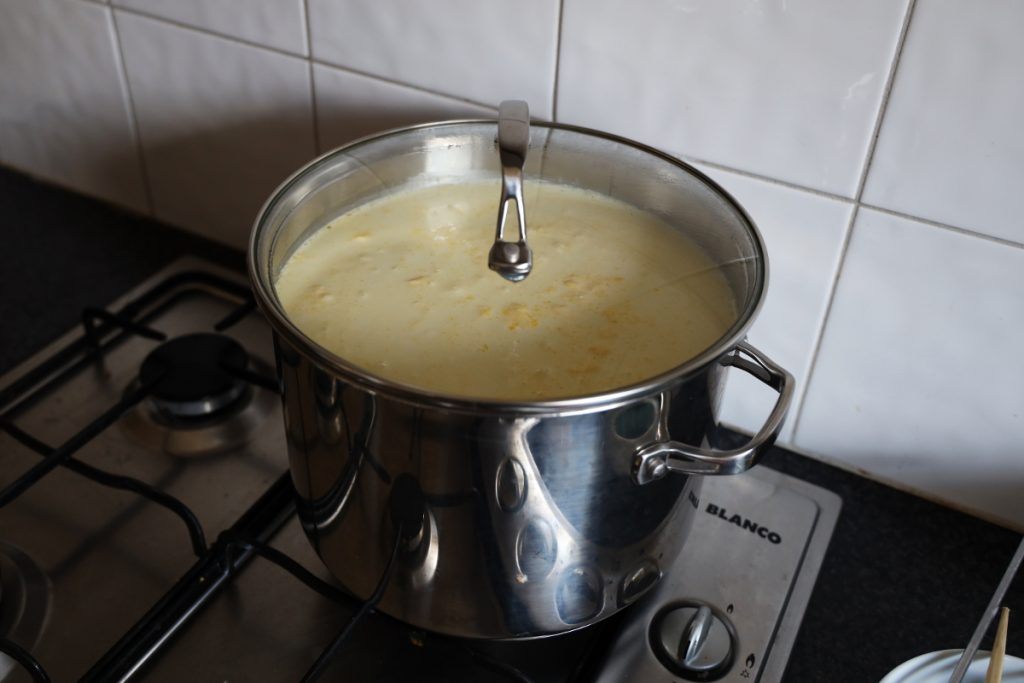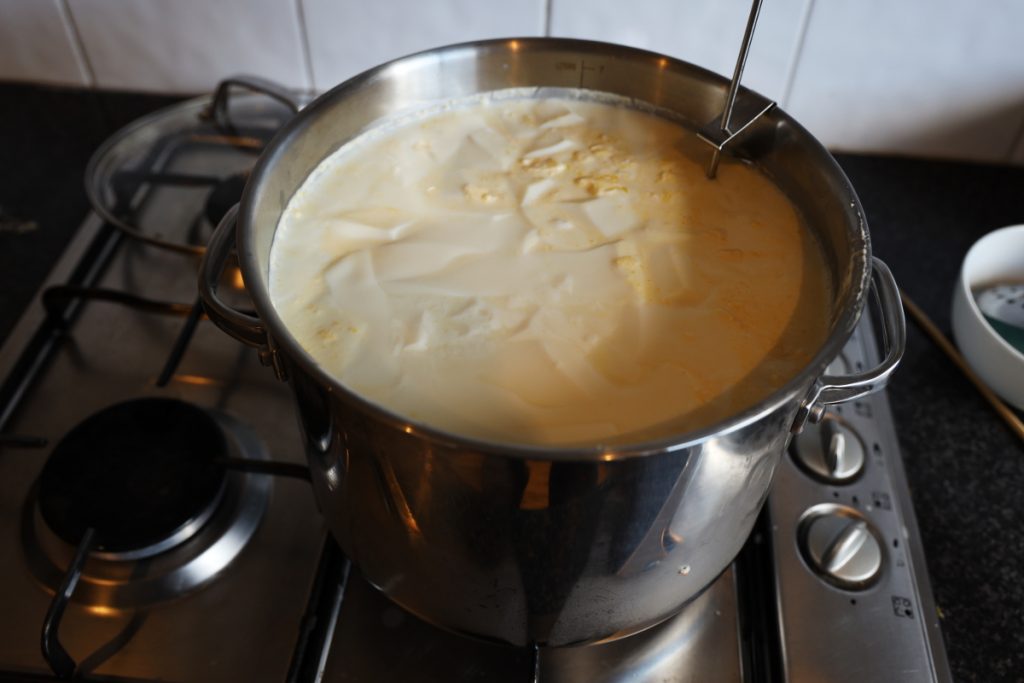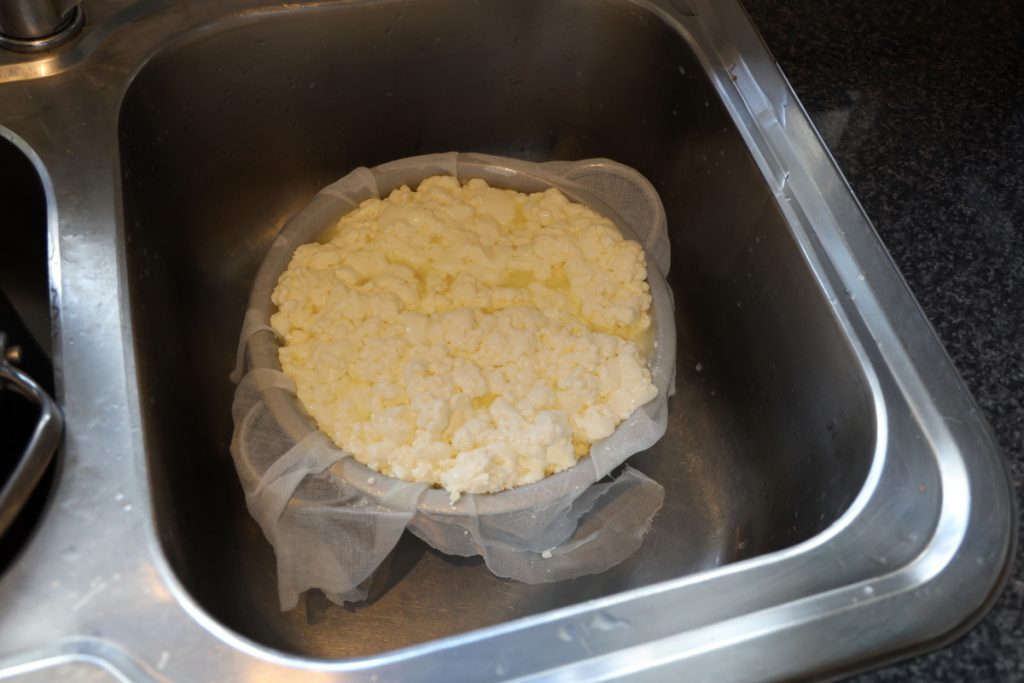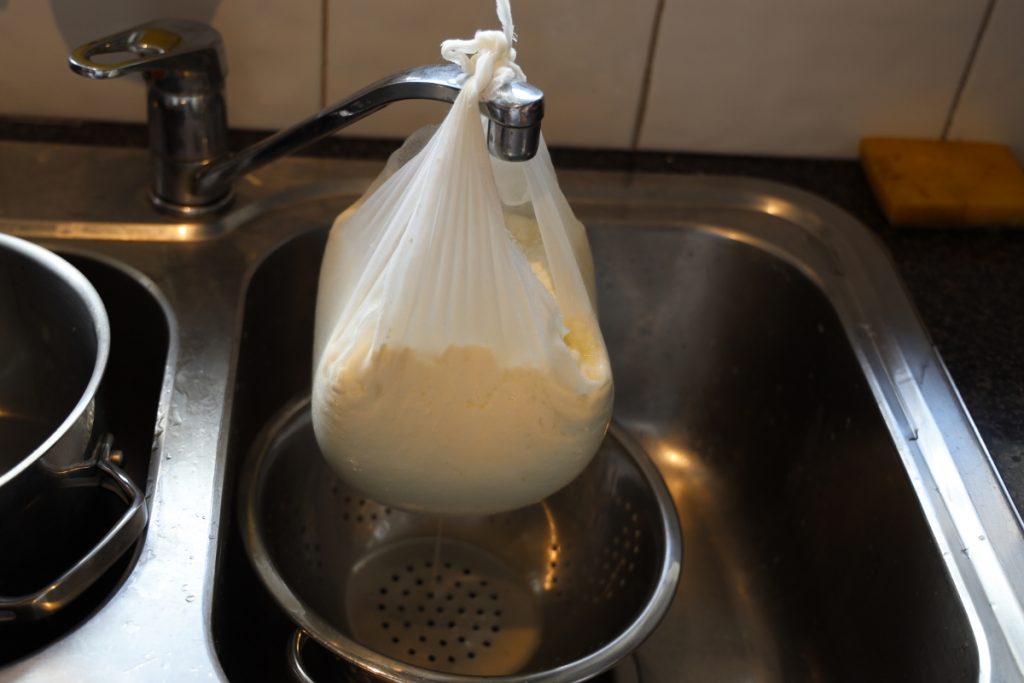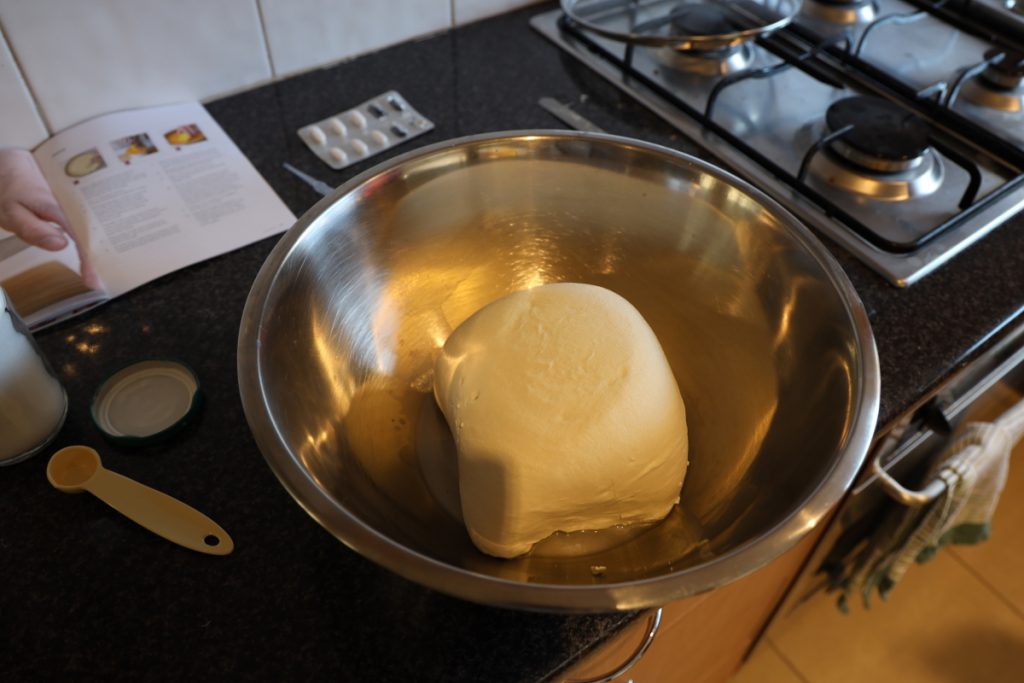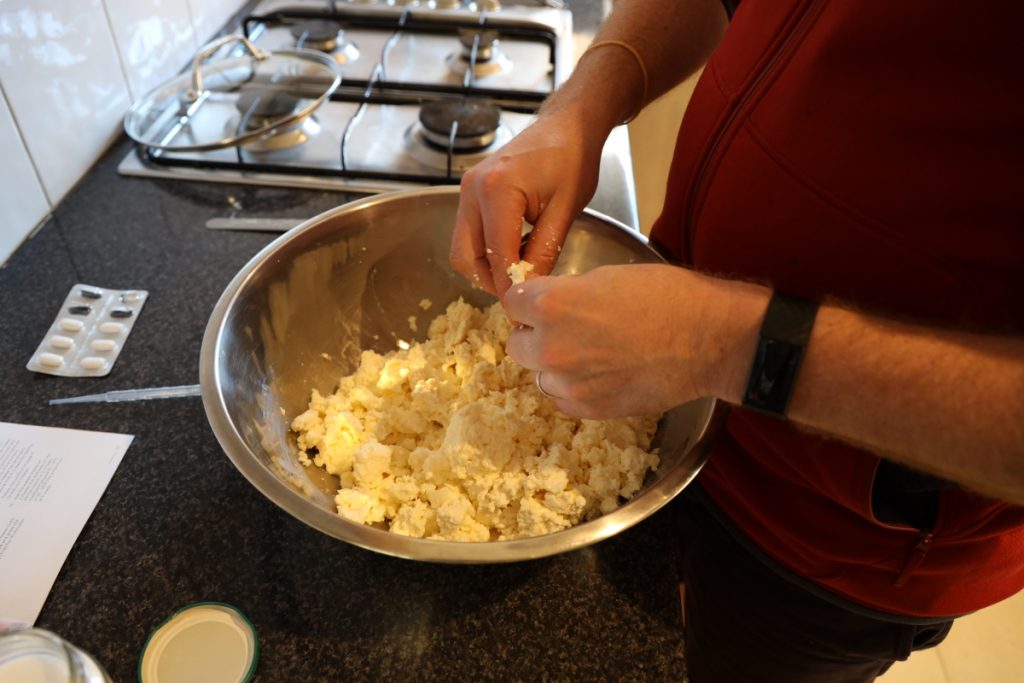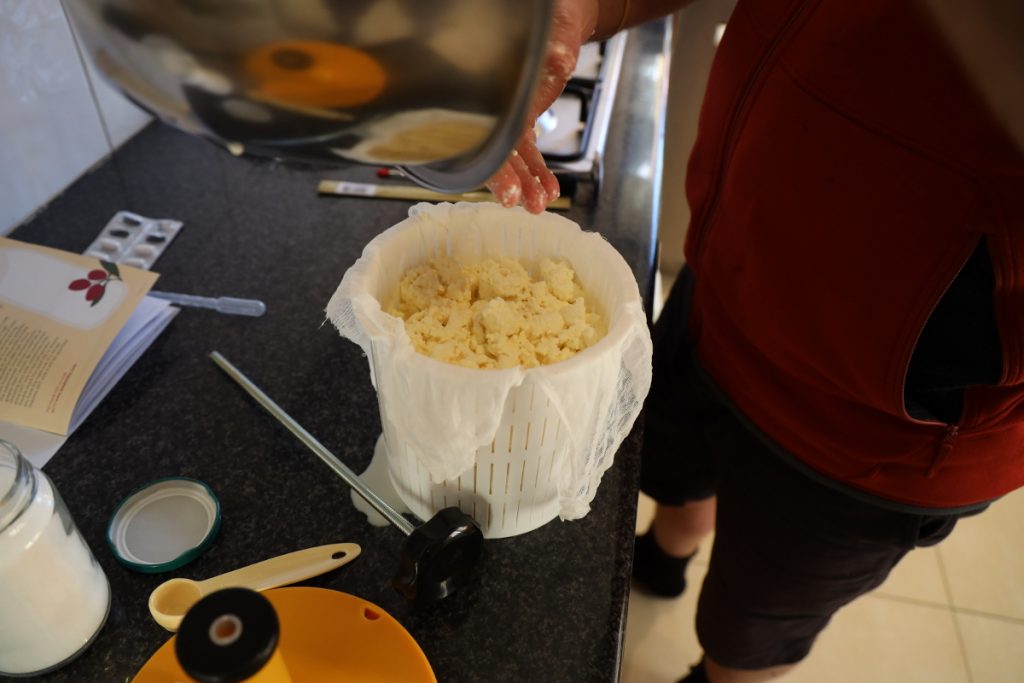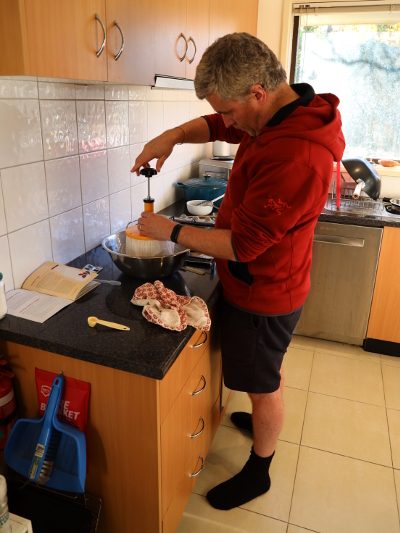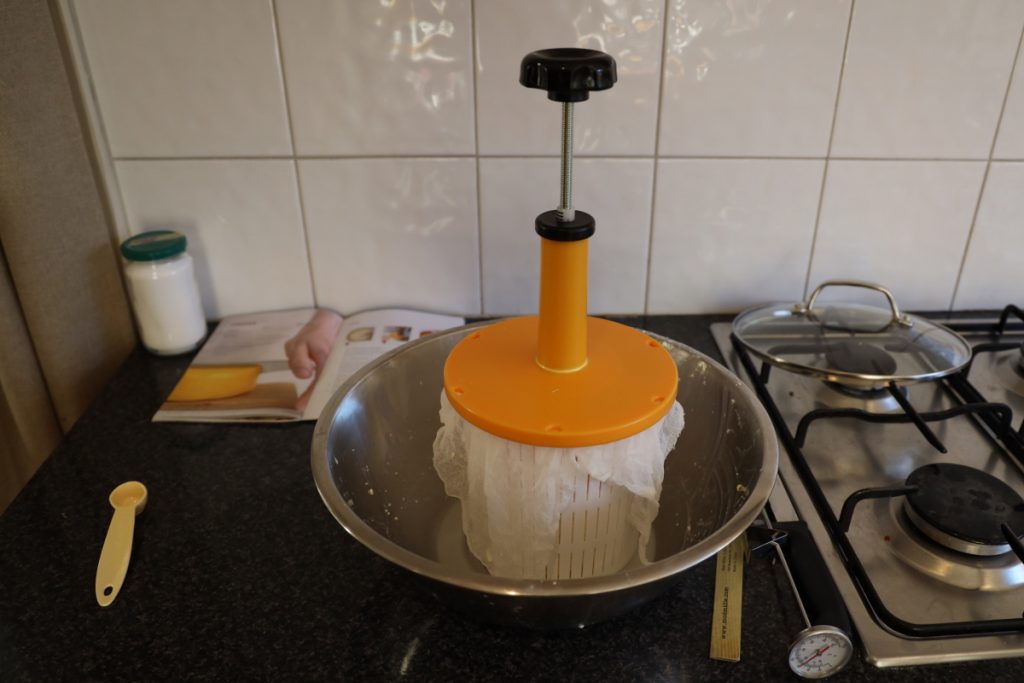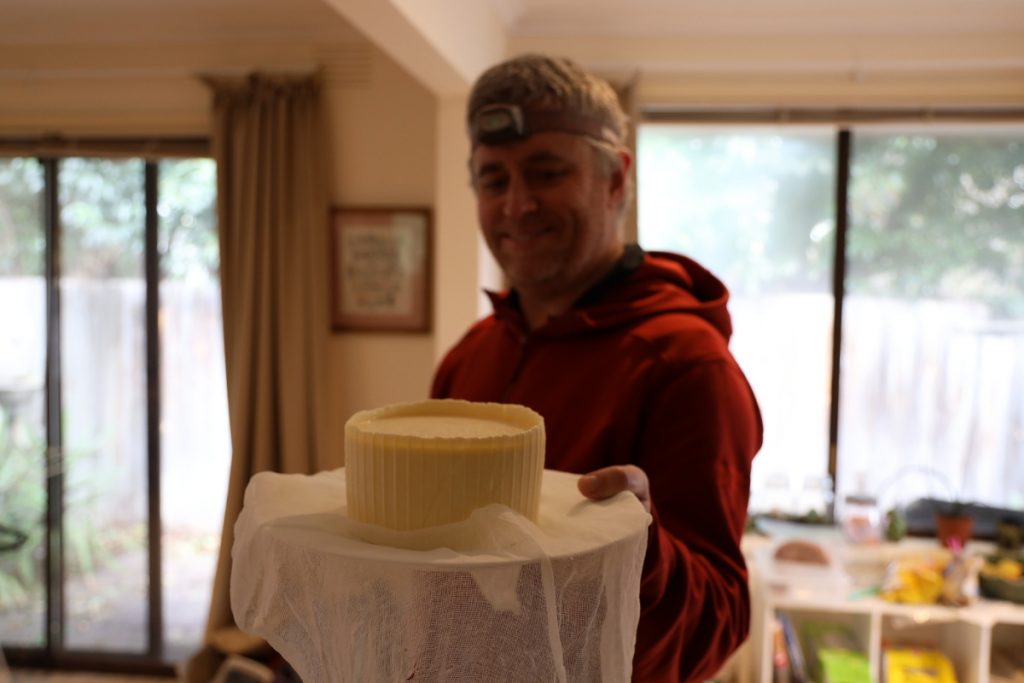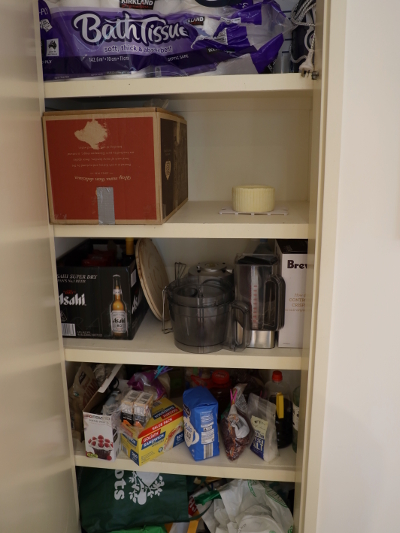We attempted another cheese. Feta this time. It sorta worked…
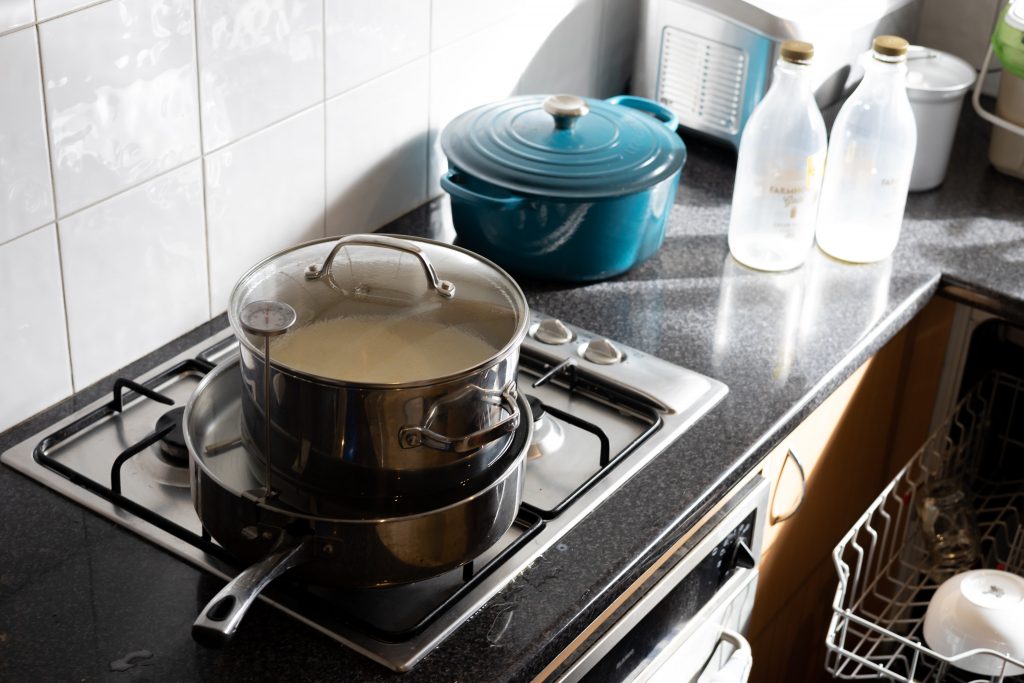


This is where we started to have problems. After 3 hours I tried to get one of the blocks out of the mould and it disintegrated in my hand. So I scooped it back into the mould and we let it sit for another 3 hours or so.
But it was still too soft. So again I consulted cheesemaking reddit and they said it was possibly because our house was too cold and the cheese cooled down before it could knit properly. They said I could just leave it for another day and see if it solidified more by then.
Isn’t it weird that you can leave dairy products out at room temperature for apparently very long periods of time and not get sick/die?? (I think so.)
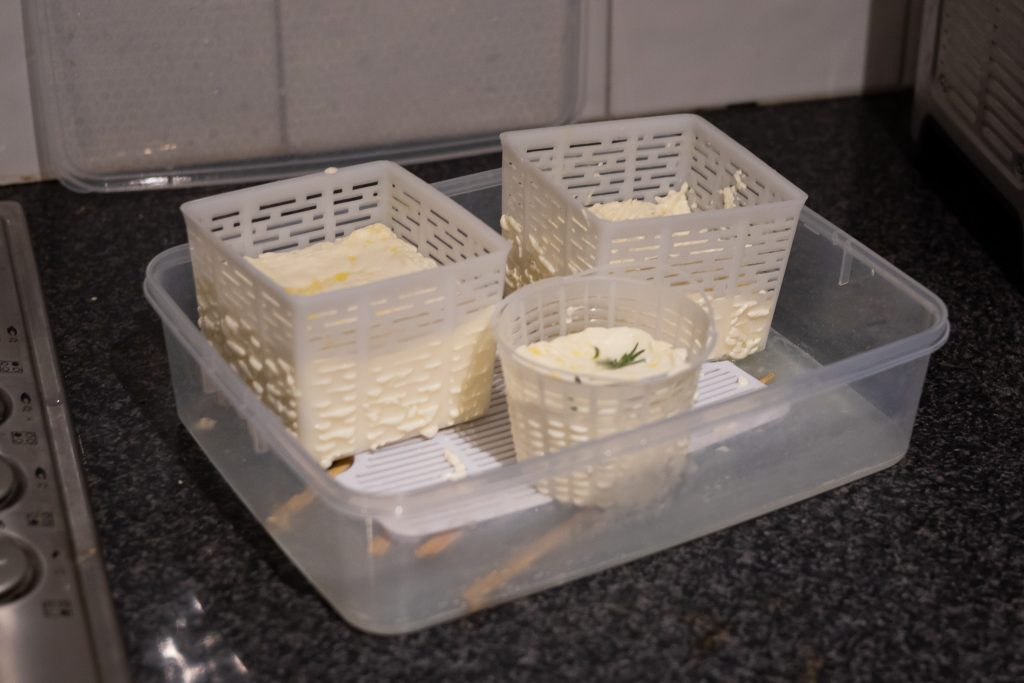
According to the instructions that I am reading now, we were supposed to let the de-moulded feta sit on a mat to drain for another 12 hours and I’m not sure we actually did that. Maybe that was part of the softness problem?

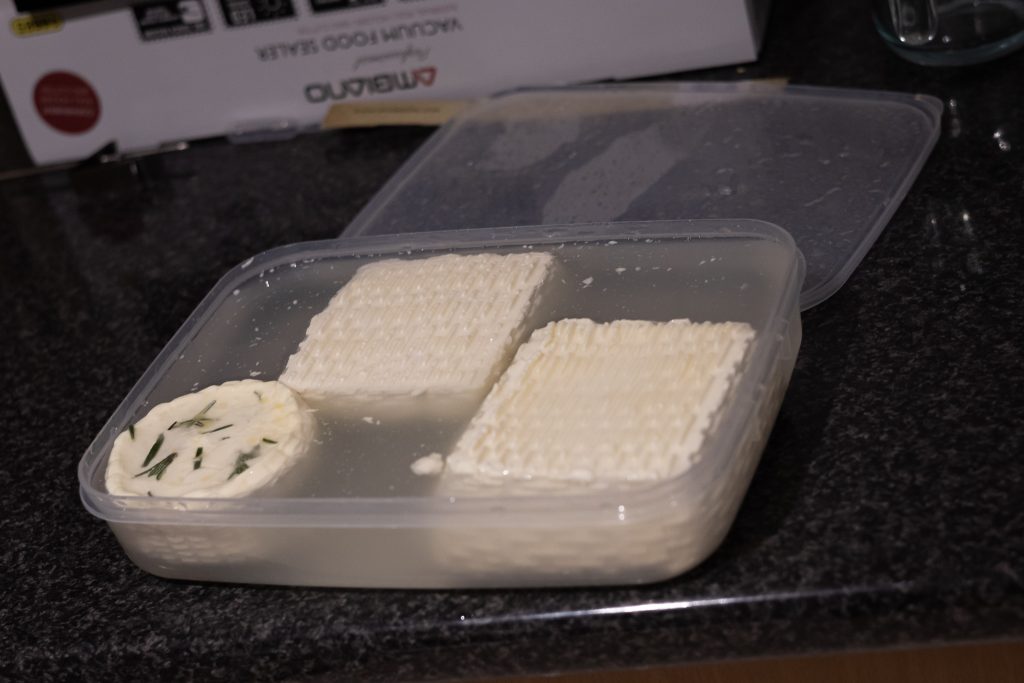
End result: tastes ok, but it’s very soft feta. It jiggles! Not really good for like, salad, but it’s fine in cooked things.
